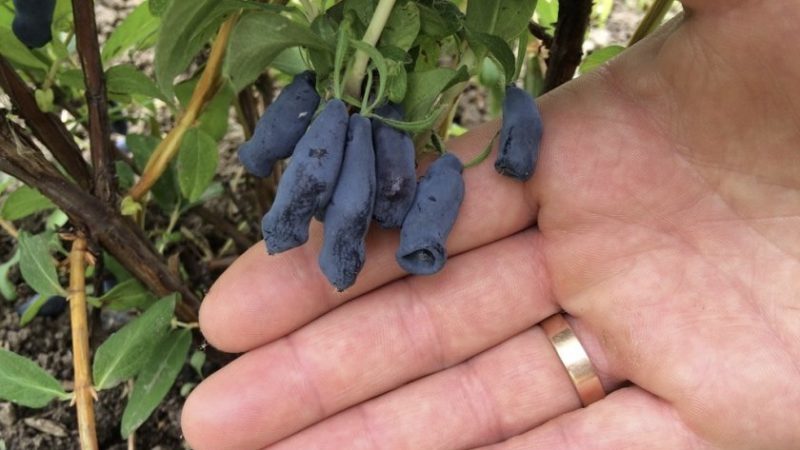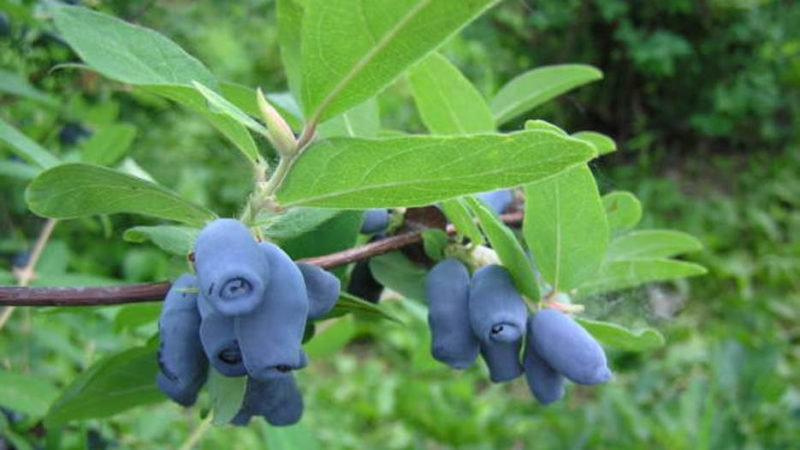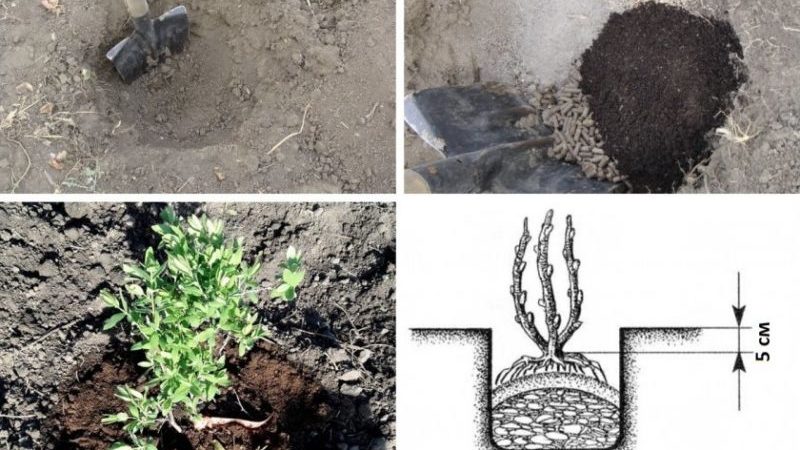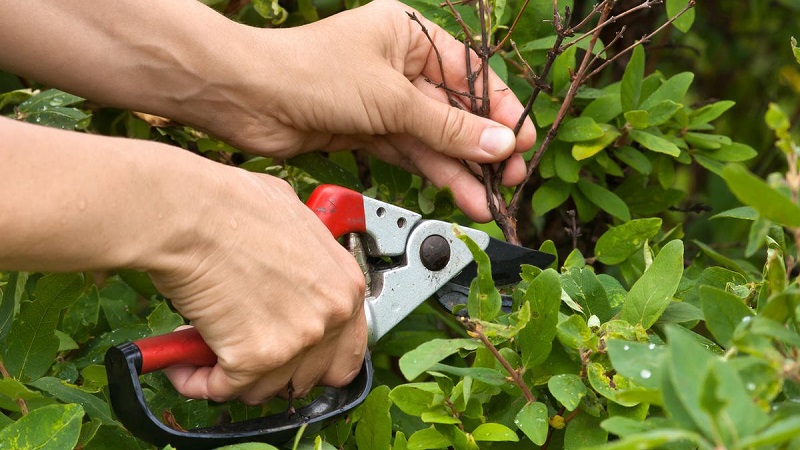Height of adult honeysuckle bushes and trees
Honeysuckle (Lonícera) is a plant group of the Honeysuckle family (Caprifoliaceae) with over 250 varieties (for 2020). Growing together in pairs, early ripe, large, elongated fruits of most upright, climbing and creeping shrubs are edible. Ornamental and wild berries should not be eaten. In garden plots, they act as living fences and green walls. Let's tell you how high the honeysuckle grows.
The content of the article
Dimensions of the edible honeysuckle bush

Breeders regularly develop new varieties of honeysuckle for food and decorative purposes. Both bush and climbing plants are distinguished by vigorous flowering, and as a result of selection to the detriment of fruiting, specimens with dense foliage, without gaps, were bred. The size of the plant depends on the variety, quality and method of care (pruning, shaping). The height of the shoots and the density of the crown is influenced by the type of soil and the illumination of the site.
Important! The maximum height of the bush of climbing and creeping varieties (there are more than 25) reaches 6 m. Honeysuckle lianas, honeysuckle, are not able to maintain an upright position on their own and need support - a peg, an arch or a guide thread.
Bush garden honeysuckle grows up to 3 m in height, but its size is artificially constrained for aesthetics and convenience of harvesting. Removing unnecessarily long shoots has a positive effect on the quality of the berries - nutrients are not wasted on empty arrows, but go into the fruit.
Mature bush

Honeysuckle bush consists of 3-5 skeletal branches and a large number of annual green-brown shoots... When cultivated, the bush is thinned out, getting rid of inward arrows to ensure air circulation and sufficient illumination. The average size of an adult bush of wild-growing honeysuckle is 1.3 m.Garden varieties reach 2 m without pruning.
Read also:
Wood
The maximum height of tree varieties is 3 m. In such species, skeletal branches grow from a single base (height - 20-30 cm). There are a minimum of shoot branches, due to their high location relative to the ground, they rarely sprout independently. Tree varieties are not distinguished by active fruiting. The life cycle of one tree is less than 15 years. In gardening, they are used for interspecific pollination, without which fruiting is impossible.
High varieties of honeysuckle
The leader in fertility among the high edible varieties of honeysuckle is the Bakcharsky giant, reaching 1.9 m. Bred as a result of selection, it is distinguished by an oval shape of a thin crown, straight thick branches and low fruit shedding. The weight of the berries is proportional to the size of the plant as a whole - up to 2.5 g. By the fifth year, the bush yields 4-6 kg of sweet and sour berries. The variety was bred in the Siberian Research Institute of Horticulture named after I. MA Lisavenko (Barnaul), and already on its basis, by crossing, they are trying to obtain species that are even more resistant to shedding.
Other popular large varieties of shrubby and tree species of honeysuckle:
- Strawberry sensation - late variety yielding a harvest with a unique strawberry-sugar flavor. The shrub grows up to 1.4 m, but is pruned to increase the size of the fruit.
- In memory of Gijuk... A variety with a pear-shaped berry grows up to 1.8 m, yields up to 4 kg of yield. Does not crumble until fully ripe. Fruits are characterized by a slight bitterness.

- Volkhova - a variety of Leningrad selection, growing up to 2 m. The average yield for this crown size is no more than 2.6 kg per bush for 5-6 years.This soft berry has a sweet taste and strawberry aroma, suitable for fresh dessert.
- Nymph - a tall species up to 1.8 m, prone to a second flowering. Late re-harvest is not so plentiful, but in general, up to 3 kg of dense, spindle-shaped berries can be obtained from the bush. In billets, it is valued for its ability to keep its shape even after freezing or cooking.
- Moskovskaya 23 named after the capital's breeding group. The bush grows up to 1.5 m in diameter and 1.8 m in height. It quickly grows without thinning, needs to be removed from the middle shoots. Yields up to 3 kg of tart, sour dessert berries. After freezing, the bitterness disappears.
- Titmouse - a sprawling bush with a spherical crown. Reaches 1.9 m in height. Elongated oval berries have a characteristic mint-refreshing aftertaste, which is appreciated in compotes and jams.

- Fortune - a tall, branched tree-like variety that grows up to 2.5 m without pruning. Fruits are elongated bell-shaped, sweet and sour without bitterness.
- Leningrad giant picky about soil and light. In good conditions (humidity and shade) it grows up to 2.5 m. Fruits are sour, but fragrant thanks to the lilac pollen that falls on the berries. Fruits are grouped into large, sometimes accrete bunches, easily assembled, without damage. Productivity - up to 3 kg per bush. The variety is frost-resistant.
- Daughter of a giant - the result of crossing the Turchaninov hybrid and the Bakcharsky giant variety. Almost black fruits are the largest of the existing species. Berry weight - up to 2.5 g.
- Ussulga - one of the new varieties. It features large barrel-shaped fruits and an outstanding height of up to 2.1 m. The sweet-sour taste of the berries and good density without voids promise to make the look very popular.
The quality of varieties bred less than 7 years ago, time will tell. Breeders and gardeners have yet to assess the resistance of the species and the retention of varietal traits at the next stage of breeding.
Stages and dynamics of shrub growth

Honeysuckle planting material is bought or grown independently. Shrub breeding forms:
- Layers - annual shoots, fixed along the ground in spring for rooting. A small depression is made beforehand so that rainwater does not erode the soil around the layering. A year later, in the spring or at the end of the season in autumn, when the plant releases several strong shoots, the young are separated from the mother bush with a pruner. The top of the new bush is fixed vertically to a guide (peg or pole), and the roots are regularly sprinkled with soil and watered. The established shoots are dug up and transplanted to a permanent place by the end of the second season.
- Cuttings - small pieces of stem with two internodes. For propagation of honeysuckle, green or lignified cuttings are used. Young are cut off in May after flowering, kept in water until roots appear, then kept in a greenhouse until autumn (in the ground at an angle of 45 ° to the surface). After wintering in peat and the warm season, a 2-year-old seedling is obtained, ready for transplantation to a permanent place.
- Seeds from ripe berries. First, they are prepared for sowing by placing them in a freezer (-4 ° C) for 3 weeks. This will ensure germination. In March, the seeds are poured into fertile soil under a cap of peat or sand, with the help of film or glass they create the effect of a greenhouse. Seedlings need warmth and watering. The first shoots appear by mid-April. A month later, the most viable are seated. They are grown in a greenhouse or in the summer in the open field in a shaded area.
Seeds are the most difficult cultivation method that does not guarantee a successful result. When reproducing from seeds, many varieties and hybrids lose their hereditary characteristics (berry size, taste, sugar content). Culling is carried out after the first harvest.
Honeysuckle grows slowly, which intimidates inexperienced gardeners. Shrub development stages and target dates:
- In the first year, the stalk and seed sprout 5-7 cm high.The arrows need support - a vertical guide.
- In the third year, a bush with 1-2 skeletal branches grows to 40-60 cm.
- The sixth year is the maximum crown size. The honeysuckle bush reaches the height and volume required by the variety. For 4-5 years from this moment, the size of the plant does not change.
Fruiting of shrubs grown from cuttings or cuttings begins from 3-4 years. In those derived from semen, this period occurs later by 2-3 years.

Honeysuckle is pruned from the first year. Types of jobs:
- Formative pruning - treatment of the first year to give the future crown a contour. From the mass of shoots, 2-3 of the densest are left. It is carried out in the spring, immediately after planting or in the winter season, if honeysuckle was planted in the fall. In bush varieties, the lower part is removed, the crown is made out according to the template. In decorative ones, the upper branches are cut off so as not to expose the root area.
- Regular pruning - prevention of overgrowth, which leads to the weakening of the plant, and the removal of dry branches. It is carried out 1-2 times a year after spring sap flow before flowering and before frost in preparation for wintering. By pruning, they maintain optimal volume and shape, the removal of lying branches prevents rotting.
- Sanitary pruning has no deadlines or schedule. Dead branches, shoots with unknown bloom and serious discoloration of the bark or leaves are removed immediately after detection.
- Anti-aging pruning is carried out from 6-7 years, when overgrown and dry branches appear. Large shoots are cut at the root at a height of 10-15 cm, small ones are sometimes left.
Processing is carried out in autumn, when the movement of juices is minimized. Before pruning (10-14 days), reduce watering. Places of large cuts are covered with garden varnish to prevent rotting and damage by pests.
Read also:
Frost-resistant early ripe variety of honeysuckle "Lakomka"
Conclusion
The main value of honeysuckle is early, 2-3 weeks before the rest of the horticultural crops, fruiting. In the garden, bush and decorative honeysuckle play the role of zoning fences and decorative walls. Before buying planting material, it is important to check the appearance and size of a particular variety from the photo and purchase cuttings of guaranteed quality.